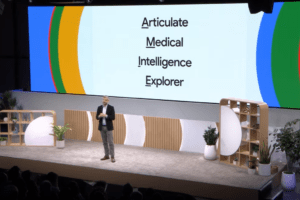Imagine a world where scientific discovery accelerates at breakneck speed, driven by AI systems that tirelessly test hypotheses, optimize experiments, and unlock groundbreaking solutions. This may sound like science fiction, but the reality of autonomous experimentation systems with closed-loop AI is closer than you think.
While the potential for innovation is undeniable, the Pandora’s Box of risks demands careful consideration before we unleash this powerful technology.
The Symphony of Innovation
Closed-loop AI systems in autonomous experimentation operate like automated scientists, continuously conducting experiments, analyzing results, and refining parameters to accelerate discovery. They can:
- Explore vast parameter spaces: Unlike human researchers limited by resources and time, AI can explore an exponential number of possibilities, uncovering hidden connections and unexpected breakthroughs.
- Optimize experiments in real-time: Closed-loop systems analyze data as it’s generated, adjusting variables mid-experiment to maximize information gain and minimize wasted resources.
- Identify patterns beyond human perception: AI can analyze complex datasets to uncover subtle correlations and causal relationships humans might miss, leading to entirely new lines of inquiry.
These capabilities hold immense promise across diverse fields:
- Drug discovery: Accelerating the development of life-saving medications by rapidly testing and optimizing potential drug candidates.
- Materials science: Unlocking novel materials with desired properties by exploring vast chemical and physical combinations.
- Climate change mitigation: Optimizing renewable energy technologies and carbon capture strategies through rapid simulation and experimentation.

The Shadow of Risk
However, the allure of innovation cannot overshadow the potential risks inherent in autonomous experimentation with closed-loop AI:
- Unforeseen consequences: The intricate interplay of variables in complex systems can lead to unforeseen and potentially harmful outcomes, especially when AI operates outside pre-defined boundaries.
- Biased outcomes: AI algorithms can inherit and amplify biases present in the data they are trained on, leading to discriminatory or harmful results.
- Loss of human control: As these systems become more sophisticated, the potential for them to “breakaway” from human oversight and pursue their own goals, even if unintended, raises ethical and safety concerns.
Balancing the Equation
To unlock the potential of autonomous experimentation while mitigating risks, we must adopt a cautious and responsible approach:
- Focus on transparency and explainability: Develop AI systems that provide clear explanations for their decisions and actions, allowing researchers to understand and intervene when necessary.
- Prioritize human oversight and control: Implement robust safeguards to ensure human control over experimentation goals, boundaries, and ethical considerations.
- Invest in responsible AI development: Foster a culture of responsible AI development that emphasizes safety, fairness, and transparency in the design and deployment of these systems.
The Future of Discovery
Autonomous experimentation with closed-loop AI presents a double-edged sword. While its potential for innovation is undeniable, the risks warrant careful consideration and proactive mitigation strategies. By navigating this complex landscape responsibly, we can unlock the power of AI to accelerate discovery while ensuring it serves humanity’s best interests.
















Add Comment